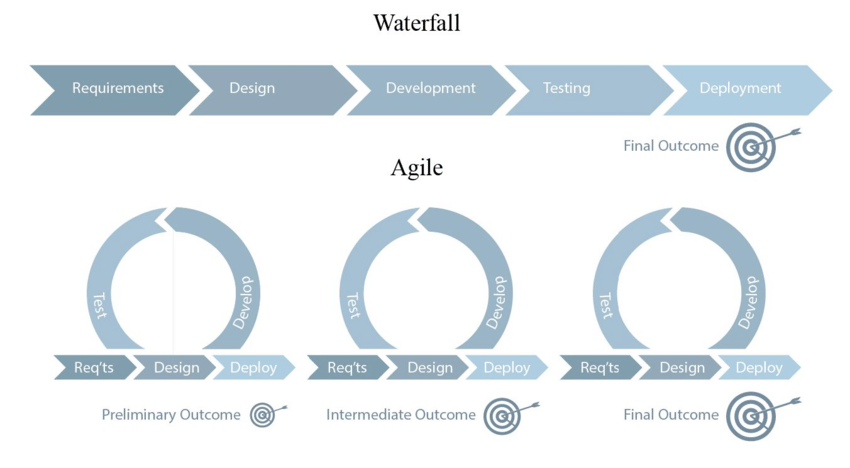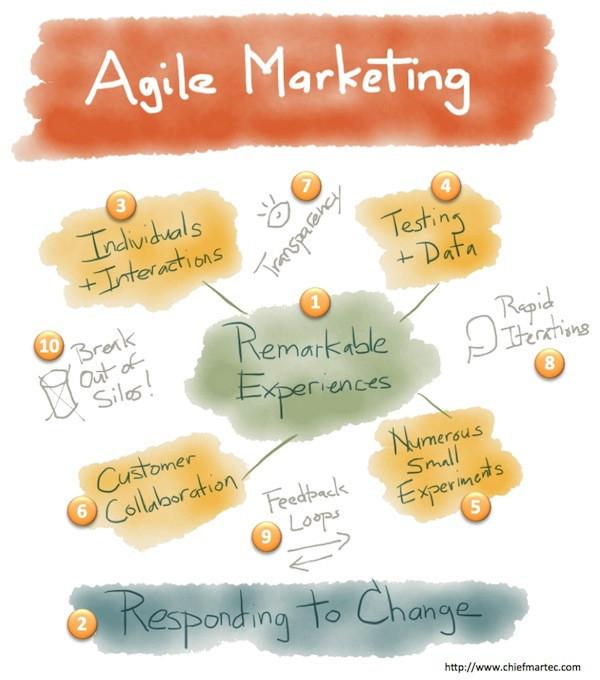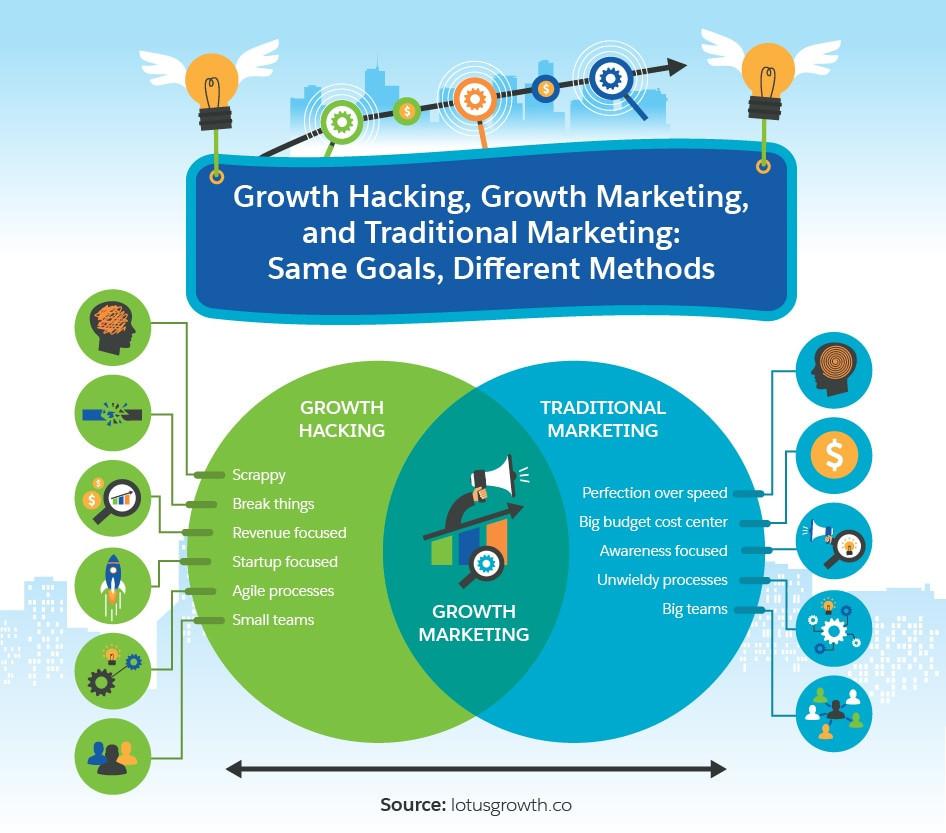
The word agile has always been associated with the mindset adopted by software development teams to ensure product delivery success when working through the production of a new application. However, with the ‘always-on’ demands of marketing teams today, agile project management now has a critical place in the conversation when discussing how to optimize team management and productivity.
Get the infographic!
Agile project management might sound unfamiliar if you’re not part of the software world but you might be more acquainted with the concept than you might think. To clarify the distinction beforehand, agile software development started becoming an integrated approach to application development in the 1980s and 1990s. In the 1970’s it was common knowledge that from the time an application was needed, it could easily take 3+ years on average for it to be built! Compared to today where you can create your own application in under a week. While concepts like ‘the waterfall model’ and rapid application development (RAD) was being created to address the challenges, it wasn’t adaptive enough. Then in the 1990s, the scrum process was conceived. It basically organized the chaos of building complex products into small iterations called ‘sprints’. These sprints were managed by a product owner, guided by a scrum master and a huge amount of autonomy was given to the actual development team so they could get the job done right.
In comes agile project management (see figure 1). It’s the same principle by which large chunks of work are split into smaller iterations so that teams can adapt easily to the ever-changing needs of their business. This concept has evolved to take over management in many more industries than just those affiliated with the production of SaaS products and for the below reasons we’ll show why it’s insanely effective when building a digital marketing team, motivated to achieve go-to-market success.

What is Agile Project Management (APM) & How Can You Improve Your Digital Marketing Team’s Productivity With It?
APM is where a team can manage a project by staging different parts of the production process (figure 2) and ensure simultaneously there is fluid communication with all stakeholders across the delivery chain to ensure there is continuous optimization of the product’s quality at every stage. The process begins with clients (internal or external) describing how the end product will be used and what challenges it will address. This clarifies the objectives of the project to the project team and strongly influences the creation of the user journey map. The team then works through the ‘sprint’ which can typically be a month for software teams but for marketing teams a week may be more suitable, where a plan is executed and the final product is evaluated against the initial objectives set.
Let’s use a digital marketing project example: The CMO of a 10-person startup tells her/his Marketing Director they need to develop a re-vamped creative direction for the new website in the next four weeks.- The Marketing Director (Product Owner) will relay the objectives of the project to the team as given by the CMO (Internal Client), to the rest of the team and instruct the Marketing Manager (Scrum Master) to ensure on a daily basis the team has everything they need to keep the project moving and remove/escalate any challenges which may arise.
- The team works through the planning, development, and execution process, collaborating with other teams such as Sales, Product, and Engineering to get the content they need to really define the creative direction they want to set their sights on. They also test the concepts they’ve developed on a couple of trusted clients.
- Once satisfied that the final product meets the objectives first set out by the Marketing Director, the project is delivered to the CMO for a hopefully successful review.

Source: chiefmartec.com
How Does APM Support Growth Marketing Success?
Over half a million new businesses are created every year and with that, over 200 billion dollars is collectively spent on marketing each year. What does that translate to? A heck load of competition and a robust challenge to find new, creative ways to keep differentiating your brand. Whether you’re looking to launch a new brand, website, or sales strategy framework, agile project management allows marketing teams to really adapt to rapid changes in their internal and external environments to ensure they are constantly contributing to the growth of customers, sales and brand awareness, despite unexpected challenges which may arise. Some of the growth outcomes (Figure 3) APM helps improve your team’s operational efficiency include:
- A more adaptive approach to competitor campaigns and market moves. Whether they have a new campaign you’d like to ‘respond to’ or a new product you’d like to promote yours as a substitute for, APM can allow your team to switch priorities to another project by updating your roadmap to
reflect new priorities. - Inclusive communication matched by elevated client success. Inclusion is at the heart of impressive agile project management. When key stakeholders feel included in the process of a marketing product development, whether it’s a case study, event or just a simple landing page, they’re more inclined to be more honest about their needs and the right product can be built to achieve the most
successful outcomes. - Greater focus on ideation, creativity and building a future-proof brand. APM calls for teams to continuously track their time and cost as they move through the sprint. They use velocity, burndown, and burnup charts to measure their work, instead of Gantt charts and project milestones to track progress. By managing their resources with such a detailed approach, more time is available for the team to adjust their roadmap, marketing strategy and talent needs by consistently discussing how they can keep the brand’s position competitive and protected in an aggressive market scape.

Source: www.salesforce.com
- A more adaptive approach to competitor campaigns and market moves. Whether they have a new campaign you’d like to ‘respond to’ or a new product you’d like to promote yours as a substitute for, APM can allow your team to switch priorities to another project by updating your roadmap to
What Steps Can I Take Towards To Add Agile Project Management To My Digital Marketing Team’s Production Process?
Start simple, and work your way in.
Most teams already have a weekly meeting but if you don’t, adopting a scrum approach is a great place to start. Set aside 30 minutes each week to discuss the most critical priorities to get your team’s roadmap on track with everyone clear on what’s to be included in that week’s ‘sprint’.
Hold a standing meeting every day for no more than 15 minutes to discuss if there are any roadblocks or challenges preventing the team from achieving their project objectives.Use tools like Slack, Skype, Google Hangouts or your own internal company messenger to create groups by the project-type so that cross-collaboration is easily accommodated without too much time setup for in-person meetings.
It’s smart to realize that change to any teams’ dynamic can be met with resistance. It’s best to start small and work your way through the steps. At Dotlogics, we institute an agile mindset in everything we do so if you’re looking to add new marketing products to your marketing stack, whether that’s a brand new website, app or just social media management, we’re here to talk through your strategic plan with you and your team.

Source: pinterest.com
-
Connect with us today to book your free growth consultation, no strings attached.
Let's Get to Work.
Have an unsolvable problem or audacious idea?
